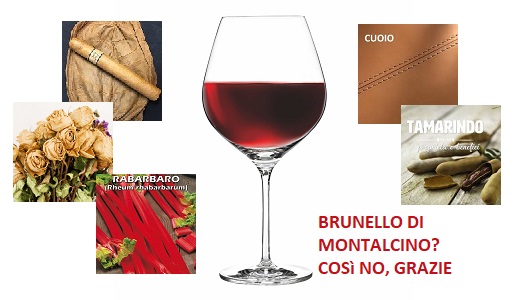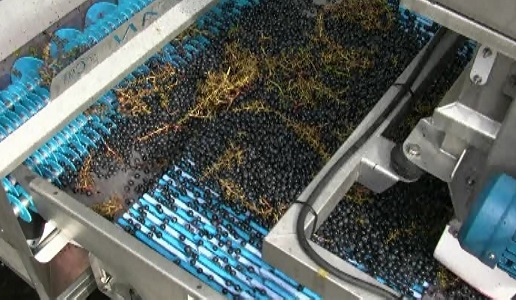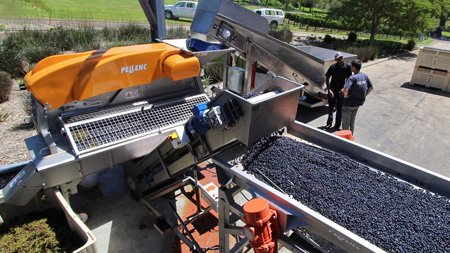Conditioning stereotypes

Wine research has opened new roads for producers and has changed, for the better, the organoleptic profile of wines but not everyone is willing to recognize this.
Italian wine has changed over the past 30 years as the result of research, innovation, markets pressure and consumer trends. One of the wines that has benefitted from these changes is Brunello di Montalcino that from being a small appellation known to a limited number of Sangiovese lovers, has gained national and international recognition and become a reference point for Italian wine with the result that prices have risen sharply for its grapes and bulk wine, while land values have skyrocketed due also to major media attention.
The wine’s success was not by chance but the result of producers sharpening their focus. Between the end of the 20th and beginning of the 21st centuries, they changed regulations governing the wine’s production three times but without altering the Brunello’s basic identity: A Sangiovese varietal wine that reaches the market five years after harvest. They modified yields to meet needs and, above all, reduced the minimum time the wine matured in wood. This latter factor contributed in no small way to improving quality. It also allowed producers, if they so desired, to use small barrels to increase the plurality of interpretations of the terroir that otherwise would have been impossible.
 All this was done because producers had noticed how in certain years, actually many, the wine did not “hold” after maturing in barrels for the period of time dictated by regulations. This was initially four years which was later reduced first to three years and then to two, but without changing the overall time of maturation. The problem with maturing long in wood was that the wine lost too much color and consistency, while the aromas tended to standardize into evolved notes that were sometimes excessive: the classic scents of dark leather, glutamate and damp tobacco. This factor was often overlooked because it was believed to be an unavoidable trait from aging and the type of wine itself. This is no longer the case. Regulation changes have remedied these “inconveniences” including one that that allowed and still allows for a vintage to be rejuvenated during maturation for up to 16% of the total. Not everyone took advantage of this allowance but it remains in effect.
All this was done because producers had noticed how in certain years, actually many, the wine did not “hold” after maturing in barrels for the period of time dictated by regulations. This was initially four years which was later reduced first to three years and then to two, but without changing the overall time of maturation. The problem with maturing long in wood was that the wine lost too much color and consistency, while the aromas tended to standardize into evolved notes that were sometimes excessive: the classic scents of dark leather, glutamate and damp tobacco. This factor was often overlooked because it was believed to be an unavoidable trait from aging and the type of wine itself. This is no longer the case. Regulation changes have remedied these “inconveniences” including one that that allowed and still allows for a vintage to be rejuvenated during maturation for up to 16% of the total. Not everyone took advantage of this allowance but it remains in effect.
All this created a widespread and positive view of Brunello that, thanks to the wines from Biondi Santi, Barbi Colombini, Lisini, Poggio alle Mura and others, starting in the 1960s, demonstrated the great capacity to age the Sangiovese from this area had. Between the 1970s and ‘80s, new producers gave new impetus to the appellations with new ideas and innovations in regard to Brunello’s flavor and appearance. The color became more compact and, above all, the tannins became more elegant while the aroma was often sharper and slightly fruitier, at least during the first year it came out. This was the case for the wines from Soldera, Cerbaiola, Baricci, Poggio all’Oro Banfi and Poggio al Vento Col d’Orcia, La Casa Capazio, Altesino, Chiesa di Santa Restitura and some reserves from Poggione. These wines did not change the common concept of a Brunello, which remained that of an aged wine with evolved aromas.
Conversations with wine shop operators throughout Italy have confirmed the following classification for the great Italian DOCG wines: vintage Chianti Classico, slightly aged Vino Nobile di Montepulciano and Brunello di Montalcino, especially after it has aged significantly, as demonstrated by the prices it commands. This is basically the picture in regard to the past but what concerns me today is that many consumers and even some wine shop operators believe nothing has changed over the past 30 years, while even some Italian and foreign pundits remain stuck in the past.
 The reality is, however, that many things have changed during this period, some very positive and others less so. But then it is no secret that when it comes to creative research not every idea has the same validity, above all when tested by time. During the 1990s, attempts were made to give Brunello greater consistency through excessive extracts, which according to a strictly Bordeaux mentality saw délestage and the quest for phenolic maturity as the dogma for very bold wines to appeal to the American market that was very attracted to muscular wines. The colors were thus darker and it became the practice to allow the grapes to overripen on the vine while everything ended up in barriques.
The reality is, however, that many things have changed during this period, some very positive and others less so. But then it is no secret that when it comes to creative research not every idea has the same validity, above all when tested by time. During the 1990s, attempts were made to give Brunello greater consistency through excessive extracts, which according to a strictly Bordeaux mentality saw délestage and the quest for phenolic maturity as the dogma for very bold wines to appeal to the American market that was very attracted to muscular wines. The colors were thus darker and it became the practice to allow the grapes to overripen on the vine while everything ended up in barriques.
Not everyone followed this fad, while some did only in part, but much was learned from this experimentation. These wines found success across the pond but proved to have limits when it came to aging. This was above all the case in regard to the bouquet, even if to different extents. The aromas of blackberry and blueberry jam, together with excessive smoky notes, with aging tended to evolve into scents of rhubarb and tamarind, with a cooked note that sometimes recalled an Amarone more than a Brunello. Wines from hot years evolved quickly, while those from cooler ones were more adapt to the fad. In any case, the tannins were less edgy and the texture was thicker. Thus even this approach had its pros and cons, even if it did create a great bone of contention between the ultra-traditionalists and the ultra-modernists that continues today, in a foolish and unprofitable way for all.
Efforts to find common ground on methods have bogged down due to ideological positions and the growth of this area has not received much attention on the part of the general public because those who should inform the public objectively have gotten caught up in the clash over changes to production methods and appear to believe that the aroma of a Brunello should still be that of 30 years ago. This is the aspect where there is a total deadlock because there is a decidedly more consolidated consensus when it comes to striving for better, creamier tannins and a tighter texture. Some tasters, unfortunately Italian, maintain a tasting philosophy that is anchored to the past and they continue to evaluate wines using parameters that, in some cases, have become obsolete, using a mentality that has been surpassed thanks to a greater knowledge about varietals and yields made possible thanks to new technologies.
These new technologies have, in my view, resulted in wines that better represent a territory because they better express its characteristics and differences. Does this mean that we should abandon the more traditional wines? Absolutely not because Italy has some very good ones, as we have singled out in our Essential Guide to Italian Wine. At the same time, those who seek to interpret a territory in a different way should not be considered a heretic, also in view of the success they are having abroad. Certain tasters need to slightly change their concept of Brunello but evidently leaving their comfort zones is no simple matter. The new approaches for Brunello of some producers, in regard to aroma and other aspects, have been adopted by others thanks to the success they have had among critics and on the market. Their basic idea is to maintain a complex aroma but one that is fruity and floral, with a minimum addition of underbrush notes during the first years on the market. This avoids bottle aging aromas like tobacco and leather or medicinal herbs in wine from northern Montalcino and Mediterranean shrubs in those from the south. The colors are brighter and less garnet, while the mouthfeel maintains a nice richness with creamy tannins, which are the traits of Montalcino.
In order to achieve this, the grapes themselves and not the bunches need to be selected both manually and optically, which has always been done in Montalcino, and not electronically. What has changed is fermentation, which pays more attention to the grapes as a whole, temperature control and the period of maceration which varies according to the type if year it was. As for maturation, it doesn’t matter whether large or small barrels are used because they are much less important for the style of a wine than they used to be because the greatest differences are now achieved during fermentation.
And fermentation is what can be the point of contention that many seem to enjoy, and which is journalistically profitable, the one that separates traditionalists and modernists, as if there was a need, and not which type or size barrel one uses or whatever. At least the clash would be over something more decisive.

 Italiano
Italiano






